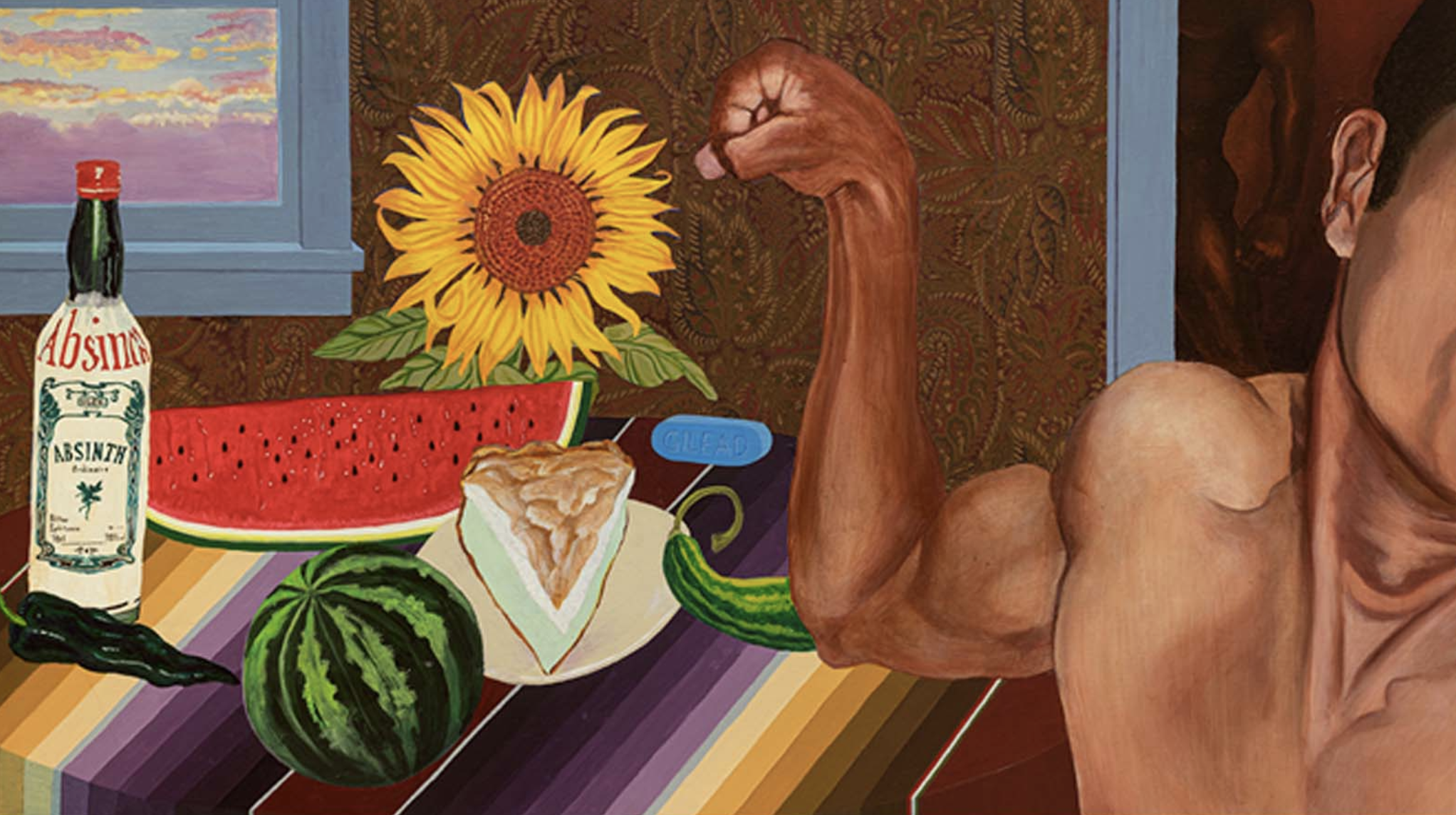Joey Terrill

b. 1955, Los Angeles, CA; lives and works in Los Angeles, CA
Joey Terrill is a draftsman, painter, printmaker, and gay activist working at the intersection between Chicano and queer identities. He is best-known for the T-shirts he created with the words maricón and malflora emblazoned on the chest (Spanish slang forfaggot and dyke), worn by friends during the 1976 Gay Parade in Los Angeles and still produced today. As in the case of his Still Life series, his work often offers a reflection on his own biography, living with HIV for forty years. Started in 1997, these paintings draw from Pop Art (specifically Tom Wesselmann’s paintings) and rasquache repertoires to unravel a complex chain of sources and meanings relating to race, sexuality, and consumerism: “The series was my attempt to make art about my ambivalence about living in theage of the HIV cocktail. While I was happy to know that I was alive, I also recognized that the HIV drugs are ‘products’ that generate millions in profits for the pharmaceutical industry.”
Joey Terrill es un dibujante, pintor, grabador y activista gay que trabaja en la intersección entre las identidades chicana y queer. Se le conoce sobretodo por las camisetas que creó con las palabras del argot popular maricón y malflora estampadas en el pecho, que llevaron sus amigos durante la Marcha Gay de 1976 en Los Ángeles y que todavía se fabrican. Como en el caso de su serie Still Life (Bodegones), su obra ofrece una reflexión sobre su propia biografía, al vivir con el virus del VIH durante cuarenta años. Iniciadas en 1997, las pinturas se inspiran en el arte pop (concretamente en los cuadros de Tom Wesselmann) y en los repertorios de rasquache para desentrañar una compleja cadena de fuentes y significados relacionados con la raza, la sexualidad y el consumismo: “La serie fue mi intento de hacer arte sobre mi ambivalencia acerca de vivir en la era del cóctel de pastillas del VIH. Aunque me alegraba saber que estaba vivo, también reconocía que los medicamentos para el VIH son ‘productos’ que generan millones de beneficios para la industria farmacéutica,” subrayó el artista.